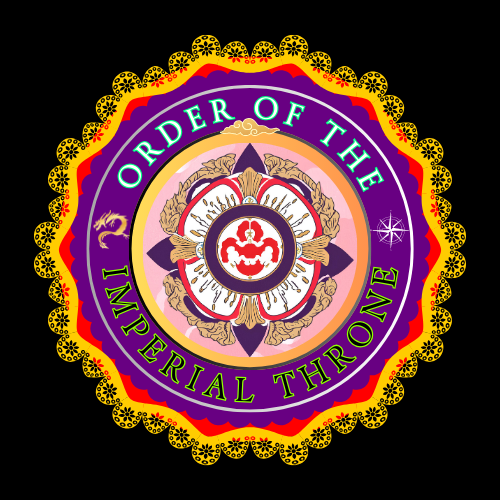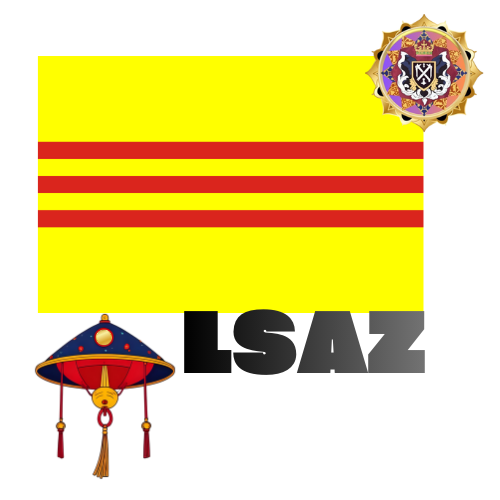
The Order of the Imperial Throne is a western styled order of chivalry that was originally founded in 1911 during the Qing dynasty in China. It is the successor and replacement to the Order of the Double Dragon.
Today the order has been restored to its former glory and the leadership has established the following hierarchy of ranks and structure for the organization:
- Colonel Knight OIT
- Captain Knight OIT
- Major Knight OIT
- Sergeant Knight OIT
- Lieutenant Knight OIT
- Knight OIT
- Squire OIT
In order to start as a squire, one needs to submit an application to the state with a biographical brief on yourself and why you think you would be a good fit for the order.
There are no membership fees to join the order nor are there any subscription fees. As a member, you can request to have a digital membership certificate granted to you free of charge.
Here is more information on the imperial throne to which the order is so named:
The imperial throne in China has a long and complex history, spanning over 2,000 years. It is a system that evolved over time, with various dynasties and emperors leaving their mark on the order of succession and the traditions surrounding the imperial throne. In this essay, we will delve into the historical order of the imperial throne in China, exploring the key moments and figures that shaped this important aspect of Chinese history.
The Beginning of the Imperial Throne
The concept of an imperial throne in China dates back to the Qin Dynasty (221-207 BCE), when the first emperor, Qin Shi Huang, established a centralized government with himself as the ruler. He declared himself the “First Emperor” and established a system of succession based on primogeniture, where the eldest son inherits the throne. This would become the standard practice for many dynasties to come.
However, it was during the Han Dynasty (206 BCE-220 CE) when the imperial throne truly took shape. The Han emperors were revered as divine rulers, and their power was absolute. They established a system of succession called “the Mandate of Heaven,” where the ruler was chosen by the gods and could only be overthrown if he lost the mandate. This belief in the divine right of the emperor would continue throughout Chinese history, shaping the order of the imperial throne.
The Three Sovereigns and Five Emperors
Before the Qin Dynasty, China was ruled by legendary figures known as the Three Sovereigns and Five Emperors. These rulers, who were believed to be semi-divine, served as the foundation of Chinese culture and were revered as the ancestors of the Han people. The first of the Five Emperors, Huangdi, is considered the founder of the Chinese civilization and is often depicted as an emperor sitting on a throne, symbolizing his authority and power.
The Three Sovereigns and Five Emperors were not part of the imperial throne system, but their legacy and symbolism were deeply ingrained in Chinese culture and would be referenced and honored by emperors throughout history.
The Early Dynasties and Their Succession
After the Han Dynasty, China was ruled by various dynasties, each with its own unique traditions and customs surrounding the imperial throne. The most notable of these dynasties were the Tang, Song, and Ming dynasties.
The Tang Dynasty (618-907 CE) had a unique system of succession called “the Divine Selection,” where the emperor chose his successor from among his sons or grandsons. This was meant to prevent any disputes or power struggles among the princes. An example of this can be seen during the reign of Emperor Taizong, who chose his third son, Li Zhi, as his successor instead of his eldest son.
The Song Dynasty (960-1279 CE) followed the tradition of primogeniture, but with a twist. The emperor would designate a crown prince, but if that prince was deemed unfit to rule, the emperor could choose a different son as his successor. This caused many power struggles and succession crises, leading to the eventual downfall of the dynasty as different factions fought for control of the throne.
The Ming Dynasty (1368-1644 CE) also followed primogeniture, but with the added belief that the emperor’s eldest son was the only one who could inherit the “dragon throne.” This belief was based on the Chinese zodiac, where the dragon is considered the most powerful and prestigious symbol. One notable example of this was during the reign of Emperor Jianwen, who was overthrown by his uncle Zhu Di, who claimed that Jianwen’s reign had brought misfortune to the empire and that he, being the eldest son, was the rightful heir to the dragon throne.
The Qing Dynasty and the Manchu Tradition
The Qing Dynasty (1644-1912 CE) was the last imperial dynasty in China, established by the Manchus, a non-Han ethnic group. The Manchus had their own traditions and customs surrounding the imperial throne, which differed from those of the Han Chinese. One of the most notable differences was the succession of the emperor’s title.
In the Han tradition, an emperor’s title changed after his death, with the title “Taizong” being reserved for the second emperor of a new dynasty. However, in the Manchu tradition, an emperor’s title did not change after death, with the title “Taizong” being reserved for the first emperor of a new dynasty. This caused confusion and conflict among the Han and Manchu nobility, leading to tensions and rebellions throughout the Qing Dynasty.
Another unique aspect of the Manchu tradition was the “hereditary prince” system, where the emperor could designate his heir while still alive. This was a break from the traditional Chinese belief that the emperor was chosen by the gods and could not be replaced until his death. However, this system also caused conflicts and power struggles among the imperial family, with some princes conspiring to overthrow their designated heir and claim the throne for themselves.
The Decline of the Imperial Throne
As China entered the 20th century, the imperial throne began to lose its grip on power. Various factors, such as corruption, social unrest, and foreign invasions, led to the collapse of the Qing Dynasty and the establishment of the Republic of China in 1912.
The last emperor of the Qing Dynasty, Puyi, was only six years old when he ascended the throne, and his reign was short-lived. He was eventually forced to abdicate in 1912, marking the end of over 2,000 years of imperial rule in China.
In Conclusion
The imperial throne in China has a rich and complex history, shaped by the beliefs, traditions, and politics of each dynasty. From the divine right of the Han emperors to the Manchu traditions of the Qing Dynasty, the order of succession and the customs surrounding the imperial throne evolved and changed over time.
Despite its eventual decline, the imperial throne remains an important symbol of Chinese history and culture. The legacy of the emperors and their dynasties continues to influence Chinese society, and the imperial throne remains an enduring and fascinating aspect of China’s past.
LSAZ Research Department
